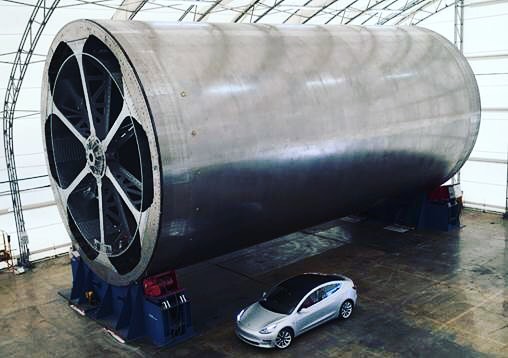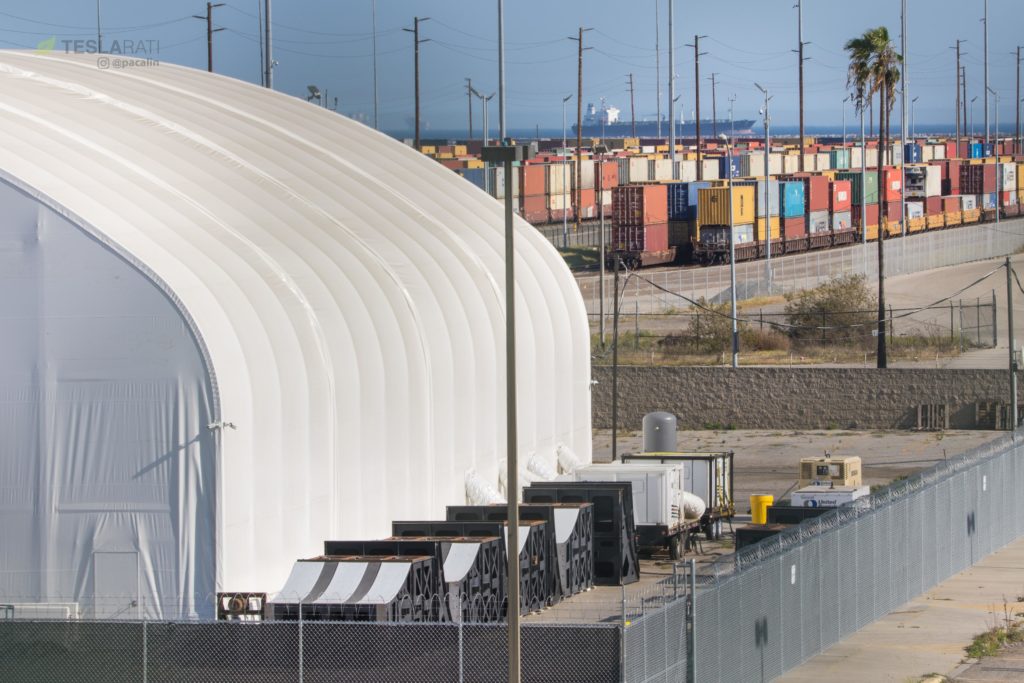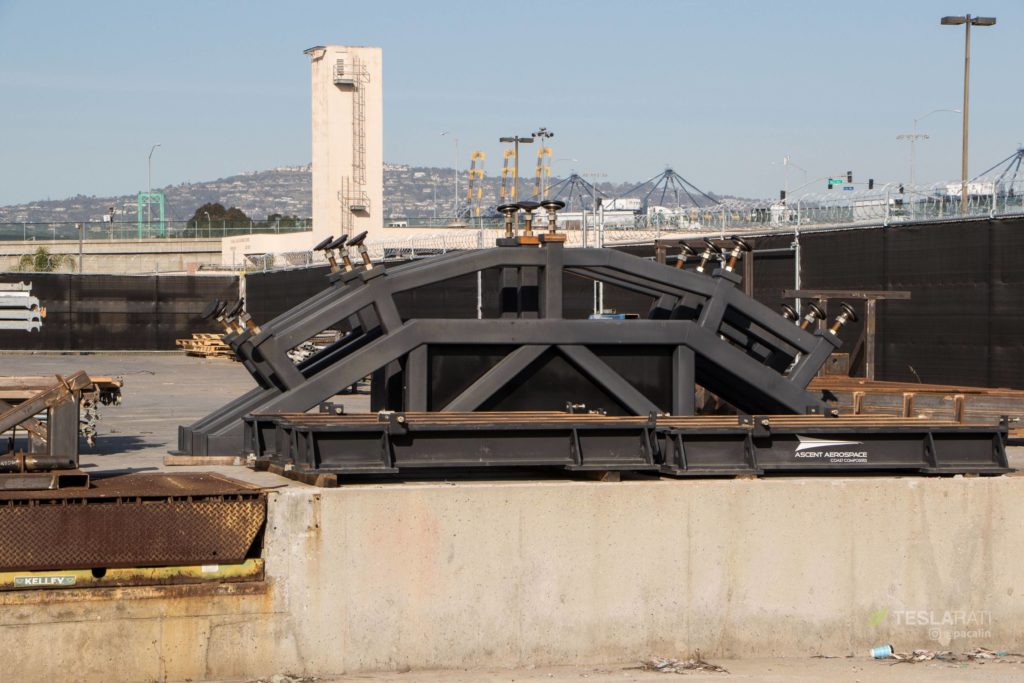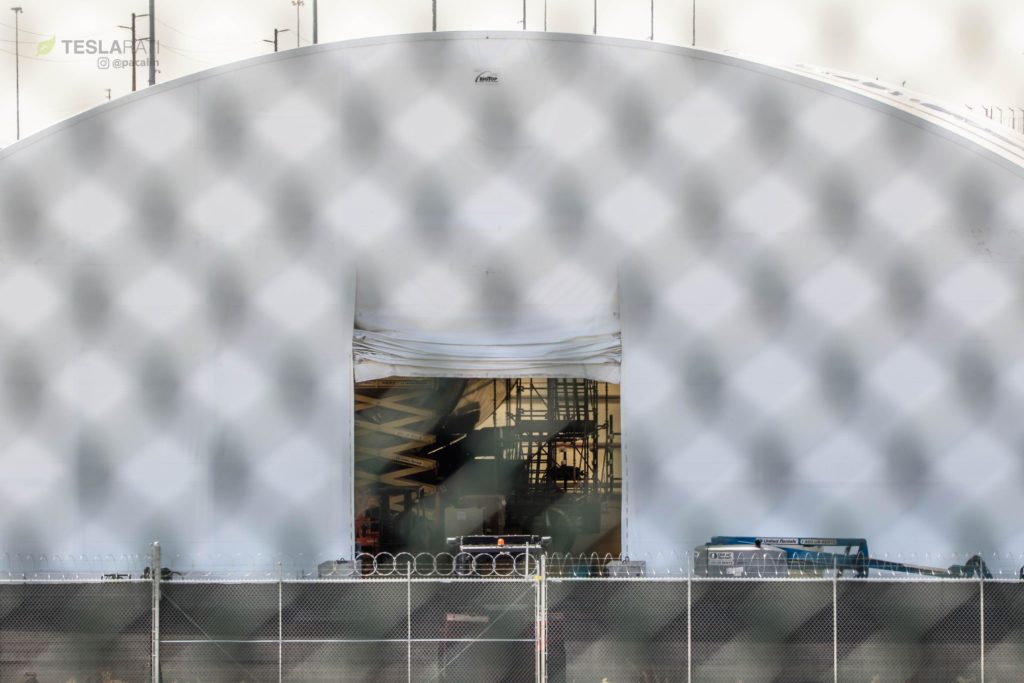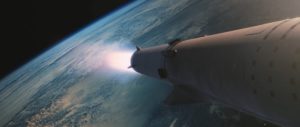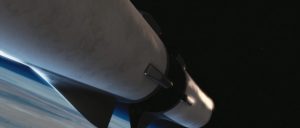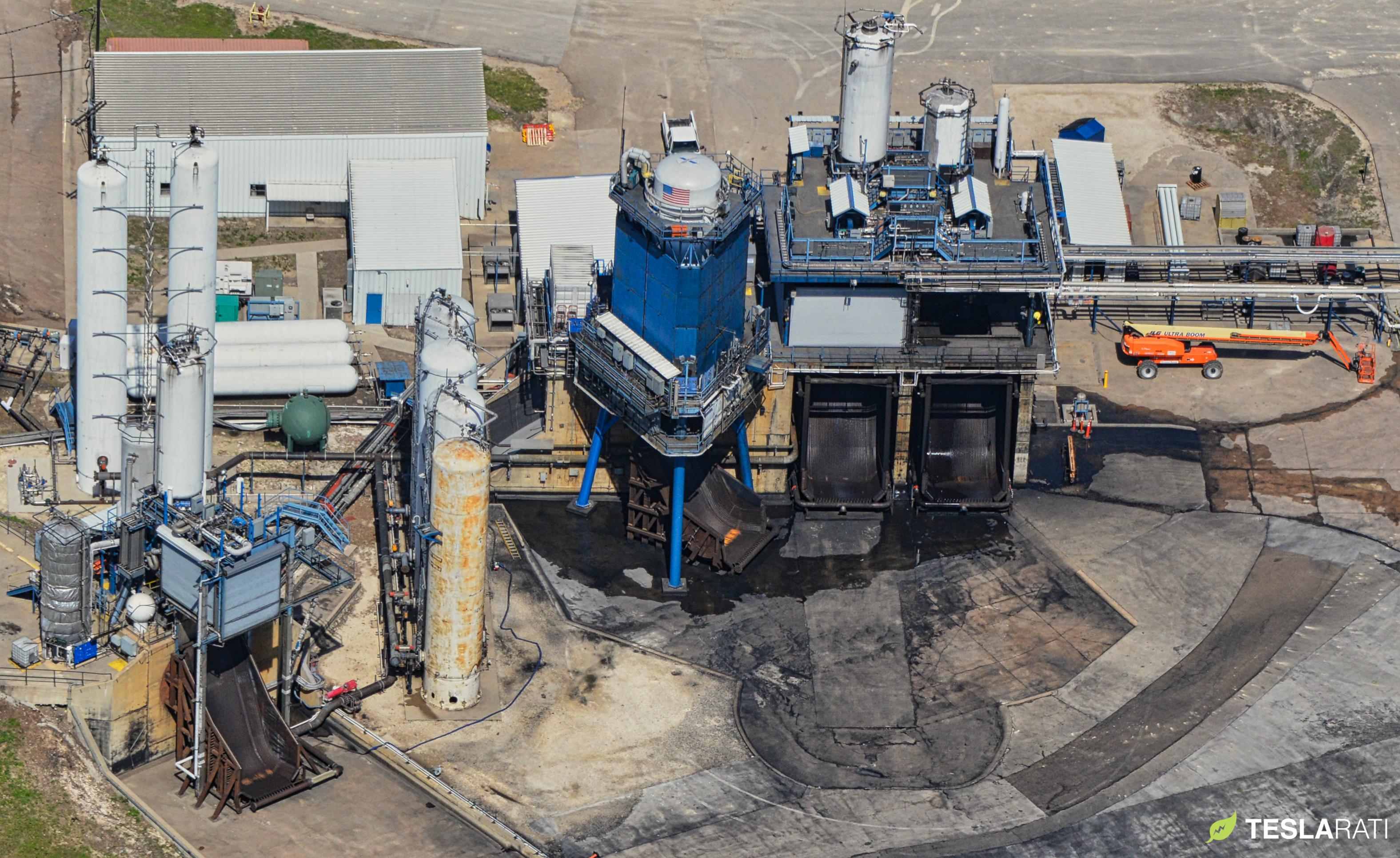

News
SpaceX execs bullish on BFR as Mars rocket test facilities expand in Texas [photos]
Aerial observations of SpaceX’s McGregor, Texas testing facilities on April 17 revealed an unusually frenetic level of construction and expansion centered around Raptor – the rocket engine intended to power BFR and SpaceX to Mars – and a new test-stand, the purpose of which is currently unknown.
With a minimum of 1200 seconds of hot-fires under its belt, SpaceX’s Raptor propulsion program is likely rapidly approaching the end of what is best described as the experimental phase of testing. While this has not been communicated by SpaceX, it is a logical conclusion following several recent developments. Namely the true beginning of BFR test article fabrication and an impressively bullish level of commitment and confidence in the fully reusable launch system demonstrated in the last few months alone by CEO Elon Musk and President/COO Gwynne Shotwell. While Musk is infamous both within and beyond his companies for painfully impractical development timelines, he demonstrated some level of growing consciousness of that fallibility at 2018’s SXSW, stating that he was working on recalibrating his expectations. Without taking a breath, he reiterated his anticipation for short hop tests of the first full-scale spaceship prototype in the first half of 2019.

SpaceX’s three-bay Raptor test stand as of April 17. The middle bay is currently home to the subscale Raptor test program. (Aero Photo)
While anyone familiar with Musk’s timeline antics may roll their eyes and laugh, far more shocking was Shotwell’s sudden pivot towards a new sense of optimism for the BFR program. At Satellite Conference 2018, the typically reserved and pragmatic executive confirmed beyond any doubt that she had become aggressively bullish on the Mars rocket, stating that she believed the spaceship would be ready for suborbital testing in 2019, while the booster-spaceship system could potentially reach orbit by 2020. Musk and Shotwell’s suggestion that BFR’s first suborbital testing – akin to an extreme version of SpaceX’s Grasshopper and F9R programs – is expected to begin in 2019 meshes well with a recent explosion of activity at Port of San Pedro in Los Angeles, CA, thanks to a combination of land acquisition, successful bureaucracy-wrangling, and the first hints of construction and BFR production. It’s highly unlikely that SpaceX would have chosen to temporarily move BFR prototyping into a giant tent on abandoned dock space rather than waiting for port and city approvals for their permanent port factory if they were not keen on moving full speed ahead with the fully reusable launch vehicle’s development.
SpaceX has completed over 1,200 seconds of firing across 42 main Raptor engine tests. pic.twitter.com/EhxbPjd8Cj
— SpaceX (@SpaceX) September 29, 2017
SpaceX’s Director of Real-Estate Bruce McHugh was less confident when he spoke before Port of San Pedro’s board of commissioners on April 19, although all in attendance expressed a huge amount of excitement at the increasingly likely prospects of a huge SpaceX rocket factory materializing in their neighborhood. Local contractors, economic development representatives, and many other community members were eager for the approval and permitting process to finish up, after which SpaceX is characteristically likely to begin demolition and construction in earnest at Berth 240, the prospective site for the company’s first dedicated BFR factory.
Early phases of in-house BFR structures prototyping is taking shape behind the flaps of a custom-ordered temporary tent, something like 60m long, 30m wide, and ~15m tall at the highest point – half an acre of eccentric but functional space for Mars rocket R&D, in other words. The primary benefit of these facilities’ dock-side locations is the minimization of the transportation hell that SpaceX would have had to suffer through to transport 9m-diameter rocket hardware through downtown Los Angeles – feats that would cost as much as $2.5 million one way each time components had to be moved from the Hawthorne factory to the Port of LA, where it would be finally shipped to Texas or Florida.
- SpaceX’s first major BFR and BFS fabrication tooling, likely being stored temporarily in a tent at Port of San Pedro. Note the tent framework at the top. (Elon Musk)
- Just a casual line of car-sized steel segments hanging around outside the BFR tent. (Pauline Acalin)
- It’s understood that SpaceX will eventually move this work to Berth 240 once more permanent facilities are constructed. (Pauline Acalin)
- SpaceX’s BFR tent and mandrel, caught on April 14th. (Pauline Acalin)
Speaking at a private talk given to MIT campus members in October 2017, attendees reported that Shotwell stated that although “[BFR’s] composite tanks [would] be a challenge [for SpaceX],” the company was already working on maturing the technologies required, and also noted that SpaceX was “building a larger [version of] Raptor right now.” Half a year later, outsiders have heard nothing of any additional carbon composite propellant tank testing at the new 9m diameter, but the existence of custom-ordered (i.e. very expensive and specialized) composite fabrication tooling of the same diameter as BFR effectively guarantees that SpaceX has settled upon and is confident in its approach to manufacturing the massive composite tankage and structures. Along with a similar line of thought, expensive tooling with a fixed diameter also indicates – albeit with less certainty – that the vehicle’s Raptor propulsion system is not expected to change significantly as BFR marches closer to suborbital and orbital testing. Raptor, in other words, is probably considerably more mature than SpaceX’s composite tankage expertise, itself fairly advanced given the mandrel and additional fabrication tooling already present at Port of San Pedro.
And yet, Shotwell’s most telling display of confidence occurred just a handful of days ago at the TED2018 conference. In a lengthy and fairly well-orchestrated interview with the session’s host Chris Anderson, Shotwell repeatedly and happily made comments indicating that she has become extremely bullish on BFR and BFS in the last several months. In her opinion, BFR (and point-to-point Earth transport) will be deployed “within a decade, for sure.” Prices would nominally be “between business and economy,” or a few thousand dollars per person. Speaking on the trip from Earth to Mars, she estimated a three-month journey with BFR Block 1, “but [SpaceX is] gonna try to do it faster.” She further confirmed that SpaceX intends to build much larger BFRs, meshing with Elon’s suggestions that 2016’s ITS concept is now perceived internally as a sort of BFR Block 2. Perhaps most importantly, she qualified her timeline estimates as “Gwynne-time” when Anderson jokingly deadpanned about the infamous Elon-time. Overall, Shotwell came across as more bullish than she has ever been before on BFR’s development and future prospects, including both point-to-point transport on Earth and crewed missions to the surface of Mars – both of which she expected to begin “within a decade, for sure.” Smirking, she quipped that she was “sure Elon would want us to go faster.”
- BFR heads to orbit in an updated overview of the Mars rocket. (SpaceX)
- Note the 2017/early-2018 variant’s single delta-wing and extendable leg pods (silver). (SpaceX)
- According to Hans Koenigsmann, this vision may actually be incompatible if NASA and the US government are given too much control. (SpaceX)
Not one to end on a quiet note, the typically pragmatic executive finished by describing how she believed that spreading human presence throughout the Sol System was only “the first step [towards] moving to other solar systems and potentially other galaxies; I think this is the only time I ever out-vision Elon.” Interstellar travel and faster-than-light propulsion aspirations aside, Shotwell’s comments mark a fairly incredible shift in attitude toward SpaceX’s far loftier ambitions. Musk seems to be working to recalibrate his timelines to be less naive at the same time as Shotwell’s confidence is steadily growing – the two executives, in other words, appear to be rapidly converging upon a middle ground of pragmatic optimism (that or Musk-time is contagious!).
- Raptor’s McGregor, TX engine test bays are seen here in April 2018. A subscale Raptor prototype is visible in the center bay. (Aero Photo/Teslarati)
- A new rocket test-stand takes shape at SpaceX’s McGregor, TX facilities. As of just a few months ago, this site was effectively barren of activity. (April 17, Aero Photo)
- SpaceX’s Merlin 1D (Vacuum and Sea Level) tests stands, as well as a bay for upper stage static fires. (April 17, 2018 – Aero Photo)
As shown above, the level of construction activity at SpaceX’s Texas testing facilities is fairly impressive and could perhaps be seen as evidence that both Musk and Shotwell are speaking from a place of something approaching pragmatism. While the purpose of the new stand (center) is not yet clear, several aspects indicate that it is unlikely to be more mundane. First, the massive water tower (one that did not exist just a month or two ago, might I add) dwarfs anything found at individual engine or upper stage test stands at the SpaceX facility. It’s possible that the existence of the flame trench alone necessitates the inclusion of such a large water suppression system for damage prevention, but the presence of the blue steel skeleton of a new flame bucket (operational iterations shown on the right) suggests otherwise. For example, the Merlin stands have no such water suppression system: they do use water suppression to avoid damaging the ground systems or the engines themselves, but that water is stored in a large ground-level tank. A tower, however, indicates that SpaceX wants much higher water pressures and flow rates to be available at the new stand, a requirement for significantly more powerful tests akin to SpaceX’s full-up Falcon 9 (and Heavy) test stand – the water towers at the S1 stand and this new stand appear to be identical in size.
In other words, it’s more probable than not that this new stand is being built to support either booster static fires or much larger tests of BFR hardware (perhaps multiple Raptors at once, akin to SpaceX’s very early tests of Falcon 9’s nine Merlins). It could, of course, be used for many different tasks, but only time will tell. Given the sheer level of physical progress made in the BFR program and the swelling confidence of Musk and Shotwell, I certainly know where I’d hedge my bets.
Follow us for more live updates, behind-the-scenes sneak peeks, and a sea of beautiful photos from our East and West coast photographers.
Teslarati – Instagram – Twitter
Tom Cross – Twitter
Pauline Acalin – Twitter
Eric Ralph – Twitter
News
SpaceX’s Crew-11 mission targets July 31 launch amid tight ISS schedule
The flight will lift off from Launch Complex 39A at Kennedy Space Center in Florida.
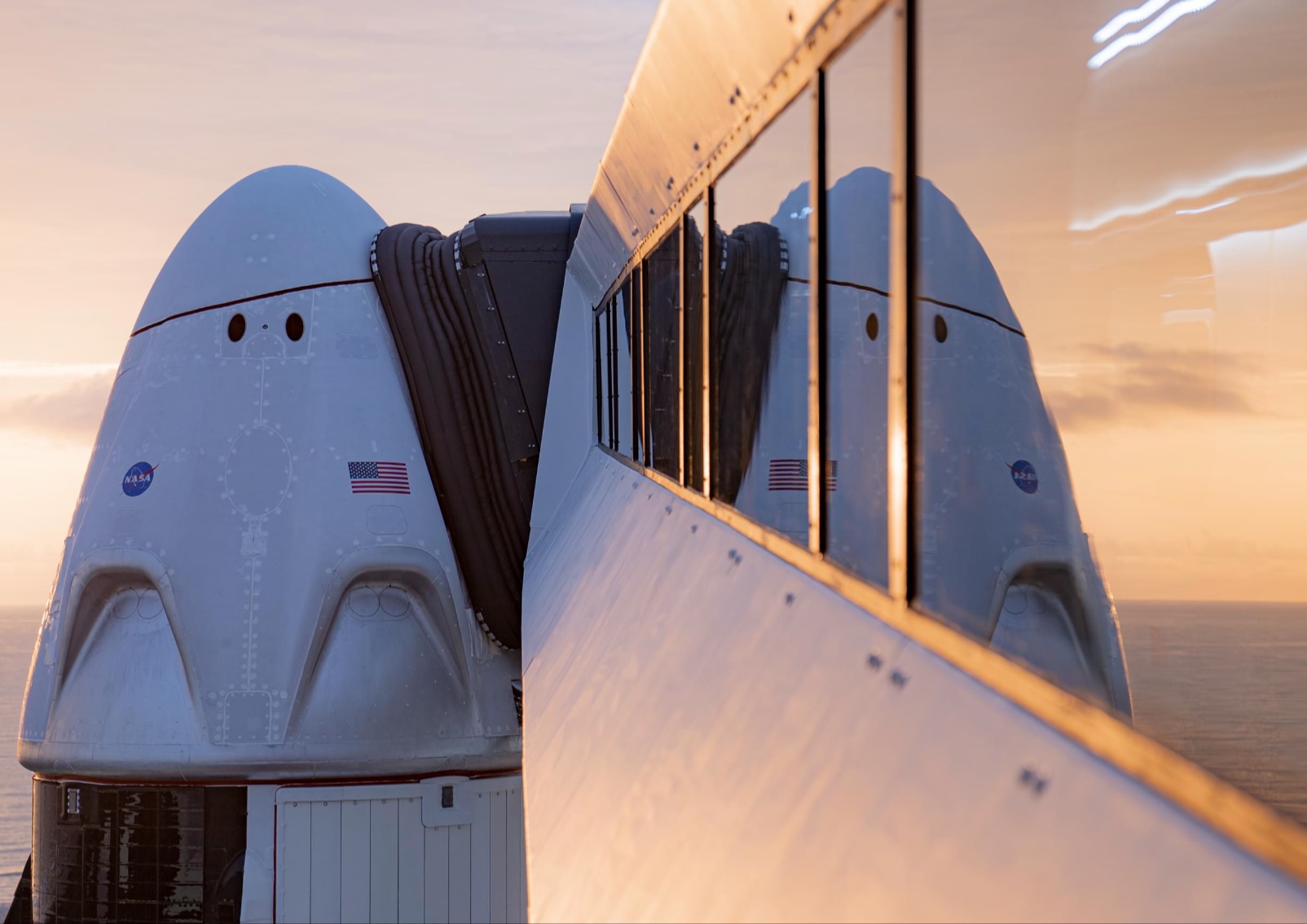
NASA and SpaceX are targeting July 31 for the launch of Crew-11, the next crewed mission to the International Space Station (ISS). The flight will lift off from Launch Complex 39A at Kennedy Space Center in Florida, using the Crew Dragon Endeavour and a Falcon 9 booster.
Crew Dragon Endeavour returns
Crew-11 will be the sixth flight for Endeavour, making it SpaceX’s most experienced crew vehicle to date. According to SpaceX’s director of Dragon mission management, Sarah Walker, Endeavour has already carried 18 astronauts representing eight countries since its first mission with NASA’s Bob Behnken and Doug Hurley in 2020, as noted in an MSN report.
“This Dragon spacecraft has successfully flown 18 crew members representing eight countries to space already, starting with (NASA astronauts) Bob (Behnken) and Doug (Hurley) in 2020, when it returned human spaceflight capabilities to the United States for the first time since the shuttle retired in July of 2011,” Walker said.
For this mission, Endeavour will debut SpaceX’s upgraded drogue 3.1 parachutes, designed to further enhance reentry safety. The parachutes are part of SpaceX’s ongoing improvements to its human-rated spacecraft, and Crew-11 will serve as their first operational test.
The Falcon 9 booster supporting this launch is core B1094, which has launched in two previous Starlink missions, as well as the private Ax-4 mission on June 25, as noted in a Space.com report.
The four-members of Crew-11 are NASA astronauts Zena Cardman and Mike Fincke, as well as Japan’s Kimiya Yui and Russia’s Oleg Platonov.
Tight launch timing
Crew-11 is slated to arrive at the ISS just as NASA coordinates a sequence of missions, including the departure of Crew-10 and the arrival of SpaceX’s CRS-33 mission. NASA’s Bill Spetch emphasized the need for careful planning amid limited launch resources, noting the importance of maintaining station altitude and resupply cadence.
“Providing multiple methods for us to maintain the station altitude is critically important as we continue to operate and get the most use out of our limited launch resources that we do have. We’re really looking forward to demonstrating that capability with (CRS-33) showing up after we get through the Crew-11 and Crew-10 handover,” Spetch stated.
Lifestyle
EV fans urge Tesla to acquire Unplugged Performance for edge in fleet and security industry
Unplugged Performance has built a name for itself by producing performance upgrades for Tesla vehicles.
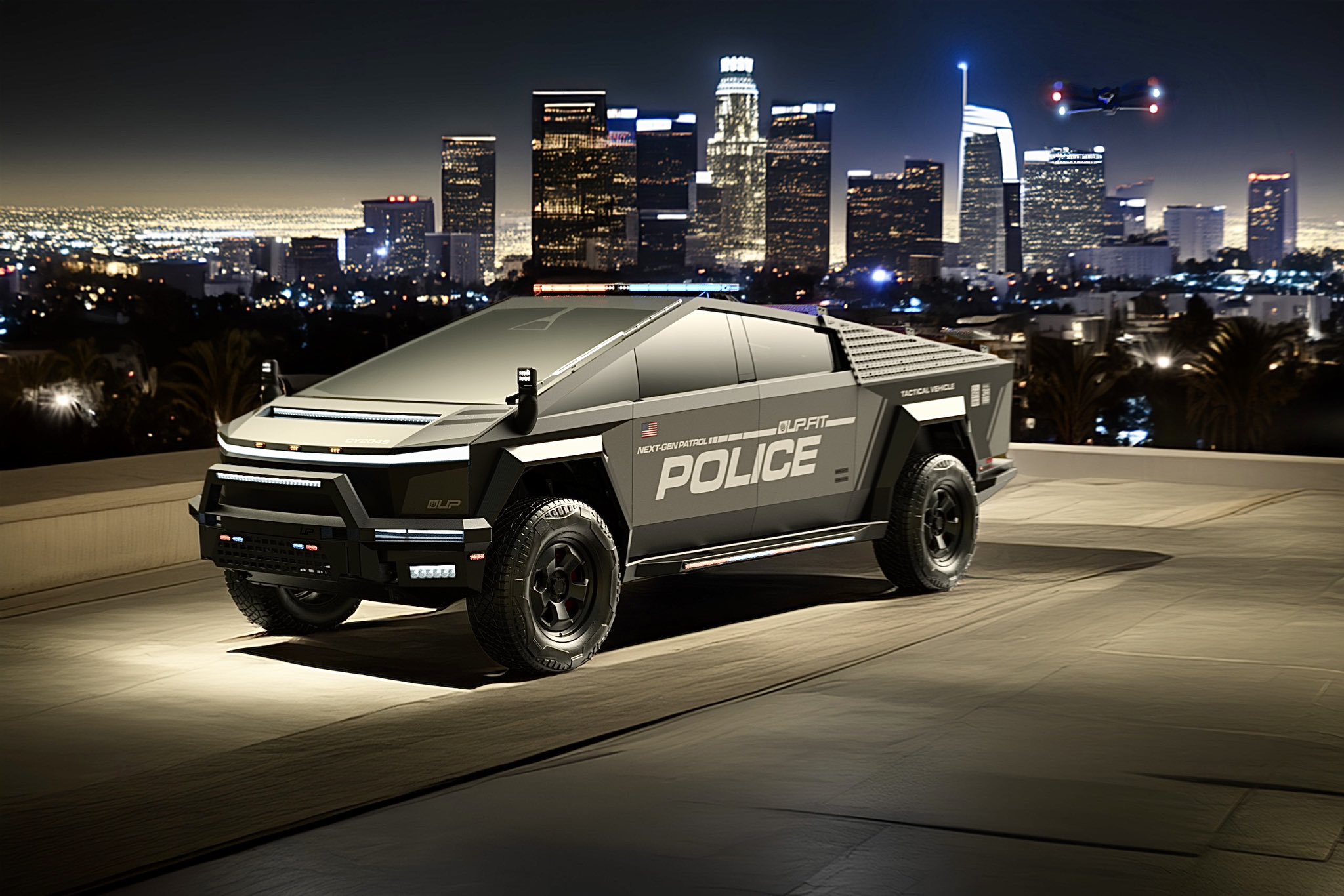
A growing number of Tesla enthusiasts and longtime community voices are calling on the electric vehicle maker to acquire Unplugged Performance, a California-based aftermarket company best known for tuning Tesla vehicles and developing specialized government fleet solutions under its UP.FIT division.
The idea was once considered a niche proposal among EV fans, but it is now gaining serious attention not just as a performance play but as a strategic move to deepen Tesla’s roots in the fleet and security industry.
A strategic fit
Unplugged Performance has built a name for itself by producing performance upgrades for Tesla vehicles, from track-optimized components to visual and aerodynamic upgrades. But in recent years, its UP.FIT division has pivoted toward a more functional future by outfitting Tesla vehicles like Model Ys for police, military, and government use.
That work has sparked growing calls for closer collaboration with Tesla, especially as the EV maker increasingly leans into autonomy, AI, and fleet services as core components of its next chapter.
“I posted this four years ago, but I think it’s more true now than ever,” wrote Whole Mars Catalog, a well-known Tesla investor and FSD Beta tester, on X. “Tesla should buy Unplugged. But not just as a Performance division. What they are doing with UP.FIT unlocks large government and commercial fleet purchases that can improve utilization.”
Tesla fans such as shareholder Sawyer Merritt echoed the sentiment, calling Unplugged a “great fit within Tesla.” adding, “They are literally located directly next to Tesla’s design studio in Hawthorne.”
Enabling the next wave
Supporters of the idea noted that integrating Unplugged into Tesla’s corporate structure could help accelerate the adoption of autonomous technologies in government sectors. With UP.FIT patrol cars already in use across some U.S. police departments, Tesla fans envisioned a future where self-driving Teslas could potentially revolutionize law enforcement, search-and-rescue, and public service logistics.
“Just imagine how autonomous patrol cars could transform policing and bring us into a safer future,” the veteran FSD tester wrote.
The benefits could also extend to Tesla’s existing consumer base. “They also have some incredible products in the works that I think will appeal to many ordinary Tesla drivers — not just those looking for performance or mods. Stuff that’s so good it should have come straight from the design studio next door,” Whole Mars Catalog noted.
Unplugged Performance, founded in 2013, shares not just a product vision with Tesla, but also geography. Its Hawthorne headquarters sits directly adjacent to Tesla’s design studio, and the two companies have maintained a close working relationship over the years. The aftermarket firm has long positioned itself as a “mission-aligned” partner to Tesla.
In response to the recent calls for acquisition, Unplugged Performance acknowledged the support from the community. “Our very existence is to support the Tesla mission with @UpfitTesla and @UnpluggedTesla,” Unplugged CEO Ben Schaffer posted on X. “We love working with Tesla and are grateful for the community’s support since 2013!”
News
Tesla debuts hands-free Grok AI with update 2025.26: What you need to know
All new Tesla vehicles delivered on or after July 12, 2025, will include Grok AI out of the box

Tesla has begun rolling out Grok, an in-car conversational AI assistant developed by xAI, to eligible vehicles starting July 12. The feature marks the most direct integration yet between Elon Musk’s artificial intelligence startup and Tesla’s consumer product lineup, offering drivers hands-free access to a chat-style companion while on the road.
Grok comes pre-installed on new vehicles
According to Tesla’s FAQ page for the feature, all new vehicles delivered on or after July 12, 2025, will include Grok AI out of the box. Owners of older vehicles may gain access through an over-the-air update, provided their vehicle meets a few hardware and software requirements.
Specifically, Grok is currently only supported on Tesla models equipped with an AMD infotainment processor and running vehicle software version 2025.26 and higher. Compatible models include the Model S, Model 3, Model X, Model Y, and Cybertruck. A Premium Connectivity subscription or active Wi-Fi connection is also required.
Tesla notes that additional vehicle compatibility may arrive in future software updates.
Grok’s features and limitations for now
Drivers can engage with Grok using the App Launcher or by pressing and holding the voice command button on the steering wheel. Grok is designed to answer questions and hold conversations using natural language, offering responses tailored to its chosen personality—ranging from “Storyteller” to the more eccentric “Unhinged.”
For fun, Tesla posted a demonstration of Grok likely running on “Unhinged” talking about what it would do to Optimus when they are on a date, much to the shock of the humanoid robot’s official social media account.
It should be noted, however, that Grok cannot currently issue commands to the vehicle itself, at least for now. Traditional voice commands for tasks like climate control, navigation, or media remain separate from Grok as of writing.
The feature is being released in Beta and does not require a Grok account or xAI subscription to activate, although that policy may change over time.
Grok privacy and in-car experience
Tesla emphasizes that interactions with Grok are securely processed by xAI and not linked to a user’s Tesla account or vehicle. Conversations remain anonymous unless a user signs into Grok separately to sync their history across devices.
Tesla has also begun promoting Grok directly on its official vehicle webpages, showcasing the feature as part of its in-car experience, further highlighting the company’s increasing focus on AI and infotainment features on its all-electric vehicles.
-

 Elon Musk2 weeks ago
Elon Musk2 weeks agoTesla investors will be shocked by Jim Cramer’s latest assessment
-

 Elon Musk3 days ago
Elon Musk3 days agoxAI launches Grok 4 with new $300/month SuperGrok Heavy subscription
-

 Elon Musk5 days ago
Elon Musk5 days agoElon Musk confirms Grok 4 launch on July 9 with livestream event
-

 News1 week ago
News1 week agoTesla Model 3 ranks as the safest new car in Europe for 2025, per Euro NCAP tests
-

 Elon Musk1 week ago
Elon Musk1 week agoxAI’s Memphis data center receives air permit despite community criticism
-

 News2 weeks ago
News2 weeks agoXiaomi CEO congratulates Tesla on first FSD delivery: “We have to continue learning!”
-

 News2 weeks ago
News2 weeks agoTesla sees explosive sales growth in UK, Spain, and Netherlands in June
-

 Elon Musk2 weeks ago
Elon Musk2 weeks agoTesla scrambles after Musk sidekick exit, CEO takes over sales

